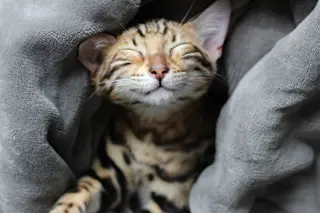Cats are mysterious creatures. There’s a lot we don’t understand about them. Why do they sleep on our heads? Why do they almost always land on their feet? Why do they love boxes so much?
One cat mystery, however, may have been solved. A team of European researchers say they’ve found an answer to the question — how do cats purr — that has vexed science, and owners, for decades.
Cats have an amazing vocal range, from high-pitched yowls and screeches to deep, resonant purrs. Most of these sounds are well understood, but purring has always been something of a mystery. Vocal cords (also known as vocal folds) are the bands of muscles in the larynx that make it possible to produce sound.
Sounds are made when air passes through these folds, making them vibrate. Low-frequency sounds are made when the vocal cords are longer, so larger animals with longer ...















